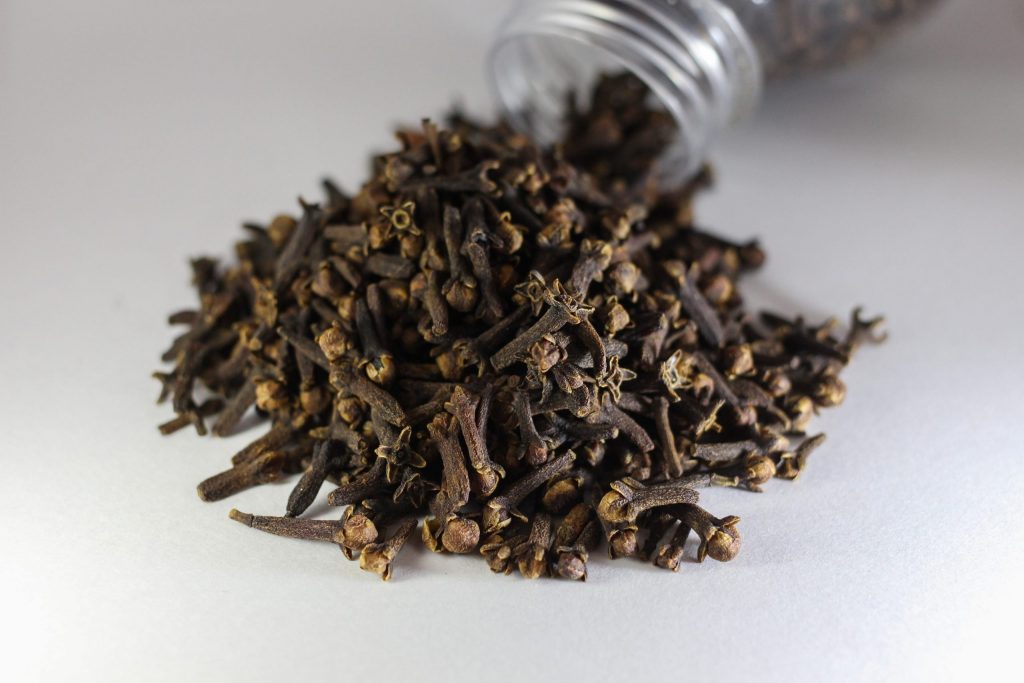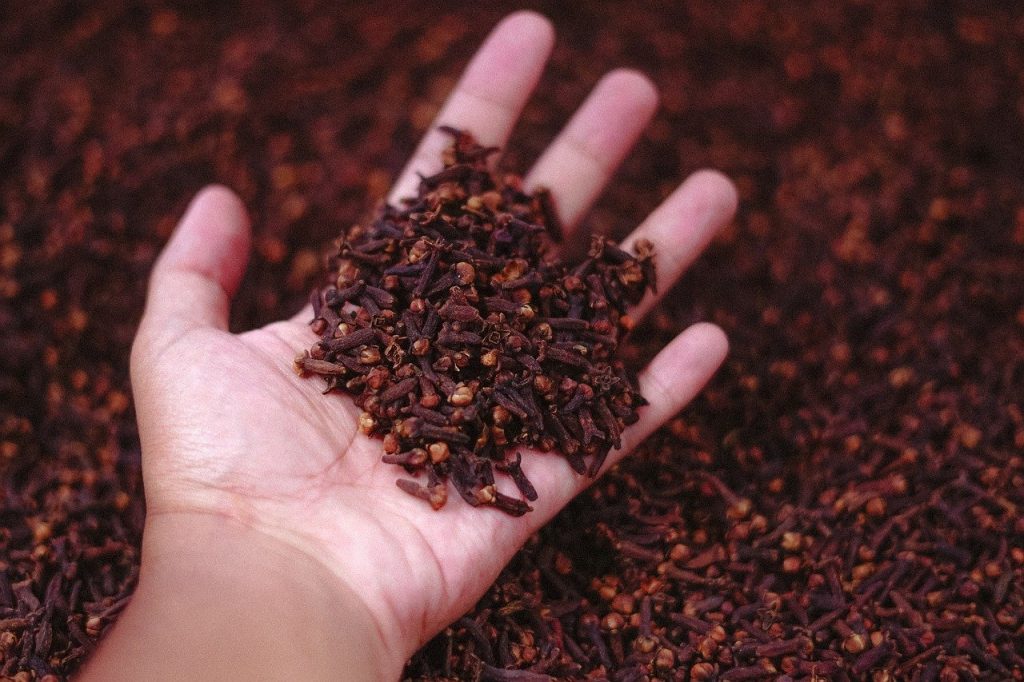
Cloves, often seen as mere aromatic spices in our kitchen cabinets, have a rich history that intertwines with ancient medicine and culinary traditions. These tiny, nail-shaped buds, when delved into, reveal a treasure trove of health benefits that many are unaware of. In this guide, we’ll journey through the multifaceted world of cloves, uncovering their secrets and understanding how to harness their potential for our well-being.
A Brief History of Cloves
Originating from the Maluku Islands in Indonesia, cloves have been traded and used for over 2,000 years. Ancient civilizations, including the Chinese and Egyptians, prized cloves not just for their flavor but also for their medicinal properties.


Health Benefits of Cloves
- Antioxidant Properties: Cloves are a rich source of antioxidants, especially eugenol. These compounds help combat oxidative stress, reducing the risk of chronic diseases and slowing down the aging process.
- Natural Anti-Inflammatory: The eugenol in cloves also acts as a natural anti-inflammatory agent. This can help reduce swelling, alleviate pain, and even combat conditions like arthritis.
- Oral Health Champion: Cloves have been a traditional remedy for toothaches for centuries. Their antimicrobial properties help combat oral pathogens, ensuring a healthier gum and teeth. Clove oil, when applied, can provide instant relief from toothaches.
- Digestive Health: Cloves can stimulate the secretion of digestive enzymes, aiding in digestion. They also have carminative properties, reducing gas formation in the gastrointestinal tract.
- Immunity Booster: Regular consumption of cloves can enhance the immune response. They increase the white blood cell count, helping the body combat infections.
- Metabolism and Weight Loss: Some studies suggest that the compounds in cloves can boost metabolism. When combined with a balanced diet and exercise, they might aid in weight loss.
- Sexual Health and Vitality: Traditional beliefs advocate the use of cloves to enhance sexual health. When combined with milk, it’s believed to act as an aphrodisiac.
- Blood Sugar Regulation: Preliminary studies indicate that cloves might help regulate blood sugar levels, making them beneficial for diabetics.
Cloves and Weight Management
There’s emerging interest in the potential of cloves to aid in weight loss:
- Metabolism Booster: Some believe that cloves can boost metabolism, aiding in burning more calories.
- Clove Tea for Weight Loss: Drinking clove-infused water or tea might help in shedding those extra pounds, although more research is needed in this area.
- Reducing Belly Fat: While there are claims about cloves helping reduce belly fat, it’s essential to approach such statements with caution and always consult with a healthcare professional.
Daily Consumption of Cloves
Chewing on cloves daily can offer several benefits:
- Oral Health: Helps in combating bad breath and is known to have properties that reduce the growth of oral pathogens.
- Digestive Health: Cloves can aid digestion and reduce issues like bloating.
Cloves in Your Daily Diet
- Morning Ritual with Clove Water: Starting your day with clove-infused water can be invigorating and offer digestive benefits.
- Clove Tea: A warm cup of clove tea not only provides relaxation but also packs in multiple health benefits.
- Cloves and Milk: An age-old remedy, cloves combined with milk, especially at night, are believed to offer numerous health benefits, including enhanced sexual health.
How to Add Cloves to Your Daily Diet?
Cloves, with their rich, spicy aroma, have been a culinary and medicinal staple for centuries. These tiny, aromatic flower buds of the clove tree are not just flavor enhancers but are also packed with health benefits. Here’s a deep dive into how you can make cloves a part of your daily routine:
1. Morning Ritual with Clove Water:
- About: Clove water is a simple infusion of cloves in warm water. It’s a traditional remedy believed to kickstart your metabolism and prepare your body for the day ahead.
- Benefits: Starting your day with clove water can be invigorating. It’s known to enhance digestion, reduce inflammation, and boost the immune system. The eugenol present in cloves acts as a natural antioxidant, combating oxidative stress and promoting overall health.
- How to Incorporate: Boil a cup of water and add 2-3 whole cloves. Let it steep for about 5 minutes. Strain and drink on an empty stomach for best results.
2. Clove Tea:
- About: Clove tea is a warm, comforting beverage made by infusing cloves in water. It carries the spicy undertones of cloves and can be a perfect midday or evening drink.
- Benefits: Clove tea can alleviate respiratory issues, thanks to its anti-inflammatory properties. It’s also believed to aid in blood sugar regulation, provide relief from headaches, and act as a natural stress-reliever.
- How to Incorporate: For a soothing cup of clove tea, boil water and add 2-3 cloves along with your regular tea leaves or tea bag. Allow it to steep for 5 minutes, strain, and enjoy.
3. Cloves and Milk:
- About: This combination is a traditional remedy, especially in Asian households. The richness of milk combined with the spicy kick of cloves makes for a unique beverage.
- Benefits: Cloves and milk together are believed to enhance sexual health, promote better sleep, and strengthen bones. Cloves, being rich in manganese, aid in bone formation. When combined with the calcium from milk, it becomes a potent mix for bone health.
- How to Incorporate: Warm a cup of milk on the stove. Add 2-3 cloves and let it simmer for about 5 minutes. Strain and drink, preferably before bedtime.
Special Benefits of Cloves
- Sexual Health: There are traditional beliefs that cloves can enhance sexual health, but it’s always best to consult with a healthcare expert regarding such claims.
- PCOS: While there are mentions of cloves being beneficial for PCOS, concrete scientific evidence is still lacking.
Choosing the Right Cloves for Consumption
- Whole vs. Ground: Whole cloves tend to retain their potency and flavor longer than ground cloves. They also offer more health benefits.
- Organic Cloves: Opting for organic cloves ensures that you’re consuming a product free from pesticides and chemicals.

Frequently Asked Questions about Cloves
1. What are the primary benefits of cloves? Cloves, the aromatic flower buds, are renowned for their rich antioxidant content, anti-inflammatory properties, and natural antiseptic qualities. They’ve been used for centuries in various cultures for both culinary and medicinal purposes.
2. How do cloves impact health? Cloves offer a plethora of health benefits. They are known to combat oxidative stress, reduce inflammation, and even serve as a natural antiseptic, especially beneficial for oral health.
3. Can cloves aid in weight loss? While cloves are not a magic solution for weight loss, some believe that they can boost metabolism and, when incorporated into a balanced diet, might aid in weight management. Clove tea, in particular, has been touted for potential weight loss benefits.
4. What are the advantages of chewing cloves daily? Chewing cloves daily can freshen breath, thanks to their antiseptic properties. They might also aid in digestion and provide a mild numbing effect, which can be helpful for toothaches.
5. Are there any sexual health benefits associated with cloves? There are traditional beliefs and anecdotal evidence suggesting that cloves might enhance sexual health. However, it’s essential to consult with a healthcare expert regarding such claims.
6. How can cloves be beneficial for oral health? Cloves have been traditionally used as a remedy for toothaches and bad breath. Their antiseptic properties can reduce the growth of oral pathogens, making them a natural choice for oral care.
7. Is it safe to consume cloves during pregnancy? While cloves have numerous health benefits, it’s crucial for pregnant women to consult with their healthcare provider before making any significant dietary changes or consuming cloves in medicinal quantities.
8. Can cloves cure diseases? Cloves have been used traditionally to treat various ailments, but it’s essential to understand that they are not a cure-all. They can offer supportive benefits for certain conditions, but it’s always best to consult with a healthcare professional for specific health concerns.
9. How does clove powder differ in benefits from whole cloves? Both clove powder and whole cloves offer similar health benefits. However, whole cloves tend to retain their potency and flavor longer than ground cloves.
10. Are there any side effects associated with excessive consumption of cloves? While cloves are generally safe when consumed in culinary amounts, excessive intake might lead to digestive issues or other side effects. It’s always best to consume in moderation and be aware of any personal sensitivities.
Summary
Whether you use the whole or in-ground form, clove has a lot to offer than just to add flavors to your meal. This ancient yet versatile spice adds warmth to your food along with several health benefits. Add it to your curries, broths, cakes, or even to your morning teas to dive into its taste and health benefits. So, improve your quality of life by adding cloves to your diet and keeping your body and brain in healthy conditions.
Blog Tags: cloves, health benefits, weight loss, antioxidants, natural remedies, clove tea, oral health, metabolism booster, dietary spice, sexual health, pregnancy, diseases, clove powder, side effects.
Read Benefits of Jaggery (Gur), click here
Benefits of Gulkand during Pregnancy, click here
Benefits of Almonds during Pregnancy, click here
For videos related to Health and Wellness, Subscribe to our YouTube Channel:
Masala Monk – The Gourmet Store
Please do have a look at our wide variety of products prepared using Clove:
Nani Maa’s Meethi Saunth
Khajur Or Dates Pickle – Sweet & Sour
Himalayan Garlic Pickle













